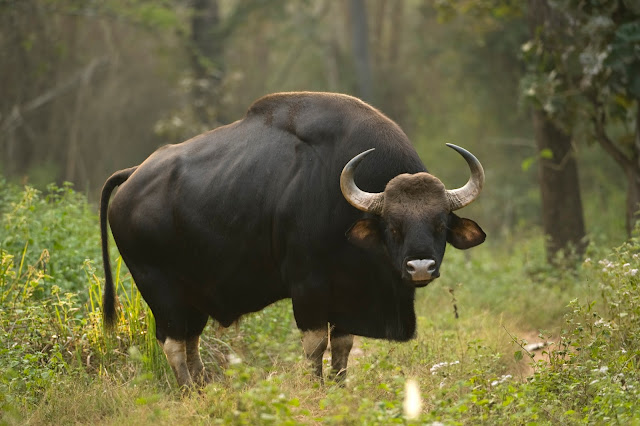Great One Horned Rhino- Indian Rhinoceros
Now Take safari for muscular armoured tank- "Great One Horned Rhino- Indian Rhinoceros"
After the Asian Elephant (For more detail see my previous post "Asian Elephant") , One Horned Rhinoceros is second big animal in India.
Introduction Part
- The Indian Rhinoceros, also called the One horned rhinoceros and The Great Indian Rhinoceros, is a rhinoceros native to the Indian Subcontinental.
- The Indian Rhinoceros once ranged throughout the entire stretch of the Indo- Gangetic Plain, but excessive hunting and agricultural development reduced their rang drastically in 11 sites of northern India and southern Nepal.
Characteristics
- The Indian Rhinoceros has a thick grey-brown skin with pinkish folds and a black horn.
- Its upper legs and shoulders are covered in wart-like bumps.
- In most adults, the horn reaches a length of about 25 cm , but has been recorder up to 36 cm in length and weight 3.051 kg.
- Males have a head and body length of 360-380 cm with a shoulder height of 170-186 cm, while females have a head and body length of 310-340 cm and a shoulder height of 148-173 cm.
All Features of One horn Rhino
Social Life
- The Indian Rhino forms a variety of social groupings. Adult males are generally solitary, except from mating and fighting.
- Adult females are largely solitary when they are without calves. Mothers will stay close to their calves for up to four years after their birth, sometime allowing an older calf to continue to accompany her once new born calf arrives.
- Sub adult males and females form consistent groupings, as well. Group of Two or Three young males will often form of the edge of home ranges of dominant males. Young females are less social than the males.
- The Indian rhinos also form a short-term groupings, particularly at forest wallows during the monsoon season and in grass-land during March and April.
Diet- Food of One Horn Rhino
- Indian Rhinoceros are grazers. Their diets consist almost entirely of grasses, but they also eat leaves, branches of trees, fruits, submerged and floating aquatic plants.
- They feed in the mornings and evenings.
- They drink for a minute or two at a time, often imbibing water filled with rhinoceros urine.
Population
- In 2006, the population was estimated to be 2575 individuals, of which 2200 lived in Indian Protected areas.
- In Kaziranga National Park: 1855 - increased from 366 in 1966; 2048 rhinos were estimated in 2009.
- In Jaldapara National Park: 108 - increased from 84 in 2002.
- In Pobitora Wildlife Sanctuary: 81 - increased from 54 in 1987.
- In Orang National Park: 68 - increased form 35 in 1972.
- In Gorumara: 27 - increased from 22 in 2002.
- In Dudhwa National Park: 21.
- In Manas National Park: 19.
- In Katarniaghat Wildlife Sanctuary: 2.
- In 2000, about 2000 rhinos were estimated in Assam. Pobitora Wildlife Sanctuary Shelters the highest density of Indian rhinos in the world, with 84 individuals in 2009 in area of 38.80 square km.
- By 2014, the population in Assam increased to 2544 rhinos, as increase by 27% since 2006.
Reproduction
- Captive males breed at five years of age, but wild males attain dominance much later when they are larger.
- In one five-year field study, only one rhino estimated to be younger than 15 years mated successfully.
- Captive females breed as young as four years of age, but in the wild, they usually breeding when six years old, which indicates they need to be large enough to avoid killed by aggressive males.
- Their gestation period is around 15.7 months and birth interval ranges from 34-51 months.
Conservation
- Rhinoceros Unicornis has been listed in CITES Appendix since 1975. The Indian and Nepalese governments have taken major steps towards Indian Rhinoceros Conservation, especially with the help of the World Wide Fund of Nature (WWF) and other non- governmental organizations.
- In the early 1980s, a rhino translocation scheme was initiated.
In India
- In 1910, all rhino hunting in India became prohibited.
- In 1984, five rhinos were relocated to Dudhwa National Park - four from the fields outside the Pobitora Wildlife Sanctuary and one from Goalpara.






Comments
Post a Comment